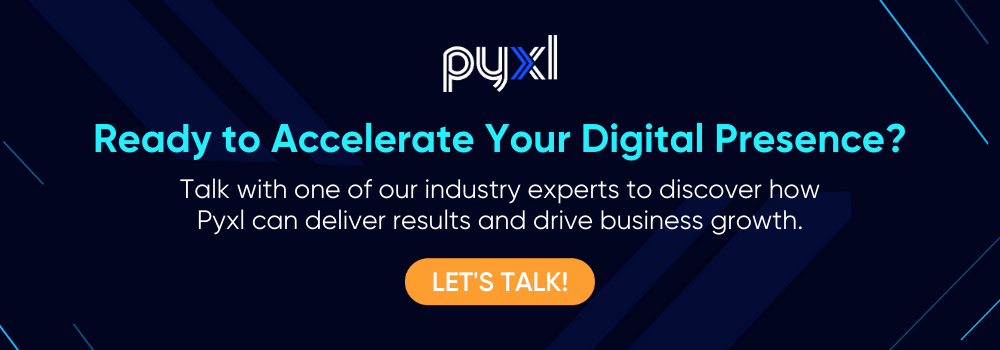What are Paid Media KPIs?
A brand or business investing in paid media should know how well its marketing efforts and strategies are working. The best way to determine the success of paid media campaigns is by tracking your key performance indicators (KPIs), which indicate whether the campaign is progressing towards its intended goal. Different industries and companies use different paid media KPIs based on their goals and objectives.
In this blog, we’ll first establish why KPIs are valuable in paid media, then discuss how to pick the right ones, including the various types that marketers should use to measure paid media performance.
Why are paid media KPIs important?
It is incredible how much information KPIs can provide. For example, consider a paid campaign that informs your target market about your new product or service. How do you know your marketing message has been heard? With KPIs, of course! For your ad campaigns and your overall marketing strategy, KPIs will help you:
- Measure the success of your campaigns and your company.
- Decide on your marketing goals and strategies.
- Analyze patterns over time.
- Identify weaknesses and opportunities for your marketing strategies.
How to pick the right paid media KPIs
Several factors can be used to determine the right KPIs according to the needs of the organization. The organization’s goals should be taken into consideration first—aligning your marketing strategy and business goals is essential. Once you have determined your goals, choose a few metrics that can be used to measure these objectives. An abundance of information does you no good, so stick to a few metrics that you can monitor and improve over time.
Types of paid media KPIs
Now that you know KPIs are crucial to your digital marketing efforts, let us delve into the many types and how to select them according to your paid media needs.
For reach
In advertising, media, and marketing, reach refers to how many unique users have seen your ad. The number of unique users reached in a marketing campaign can be measured this way. What good is paying for ads if your ads don’t reach your target audience? Businesses who are more focused on brand awareness paid media ads will likely use “reach” as their main paid media goal as it means getting their ads in front of as many relevant people as people. Keep your eye on the following paid media KPIs to determine how well your marketing is reaching your target audience.
Followers:
A brand that relates to a consumer or offers them value is more likely to be followed. Followers on the social media pages of your brand will be a good indicator of audience interest in your content.
Impressions:
We can take it even further by talking about impressions, which is how many times your post or social media handle was viewed. This information is also given for repeated views. In the case that someone views your post five times, this number gets added to the total impressions.
Web traffic:
Web traffic refers to the number of people that visit your site through links that you share on social media. This information can be easily accessed through Google Analytics.
Potential reach:
When you want a rough estimate of how many people might see your post during a given period, potential reach comes in handy.
Post reach:
How many unique accounts view your post is determined by post reach. Unlike impressions, it does not account for repetitive views. So if a person views your post 5 times, post reach will still remain 1 for that person.
Share of voice (SOV):
SOV or share of voice is a great way to compare yourself next to your competitors. This tells you your visibility in comparison to your competitors. Say, for example, you have a hashtag, you can check how many shares of voice are there for that hashtag and the core topic related to that hashtag.
For engagement
Paid media goals that are focused on ad engagements are for businesses who are looking to build relationships with their audience by helping them learn more about their business. If people are simply following your social media handles, but not engaging, then you’re not building your brand or your relationships with your followers. The content you share should trigger engagement, which is indicated by the following KPIs.
Shares:
A shared post indicates that your content has caught the attention of your audience, and people want others to see it as well, therefore expanding who sees your ads This is one of the ways of knowing if your posts are engaging and performing well.
Likes and Comments:
Likes on social media mimic real-life likes. But here your audience can explicitly express by clicking “heart” on Instagram and Twitter, “thumbs up” on Facebook to name a few. The only difference for Facebook is that there are different reactions that can be made, which does not necessarily mean that people like your content. It still provides some useful insights into what content your audience responds well to. Comments on the other hand provide greater insight into what works for your audience. Although the number of comments does not always indicate the quality of the content, since some comments can be negative too, there is still a lot of useful information that can be analyzed for future content.
Clicks:
When we talk about clicks, they can mean anything from people clicking “learn more” on your website to people clicking your posts to “see more”. Such clicks can be analyzed to know what content is popular with your target audience.
Saves and Retweets:
Your posts being saved is an indication that people enjoyed your content or found it useful and want to come back to it later. The same is true for retweets, which shows you have the support of your followers. Your engagement with your audience will be evident through these indicators.
Mentions:
The number of times a user or any other business account tags you in their posts, comments, or stories are called mentions. Keeping an eye on your mentions can help you determine how much attention your company is receiving.
Profile visits:
Your audience may want to find out more about you if you provide valuable content, leading them to visit your social media profiles. Using the insights on your business page, you can keep track of this.
For conversion
Any time your target audience takes the desired action (filled out a form, requested a demo, subscribed to your newsletter), a conversion has happened. This is exactly what conversion metrics measure–how well your ads result in leads or paying customers. However, what are these desired actions? It depends on the specific goals of your organization. Some of the metrics that can be measured in terms of conversion success are listed below.
Lead conversion rate:
A Lead conversion rate is the percentage of visitors who are captured as leads after visiting a website. This is an important conversion metric. The conversion rate of your website indicates whether it is able to attract the right audience and how effectively it converts them into leads.
Bounce rate:
Bounce rate refers to the percentage of people who visit your website but leave without exploring further. A high bounce rate indicates that more and more people are leaving your website without engaging with your content.
Email newsletter signup and whitepaper/eBook downloads:
Visitors who like your content on your website may want more in the future; hence they may sign up for a newsletter or download a whitepaper/ebook from your website. As a result, monitoring this metric is a great way to check whether your content is valuable or if it needs to be improved.
Cost and Click:
Cost and click metrics are metrics that tell you how well your digital advertisements have performed. They are solely based on how many clicks your audience makes on your advertisements, including the cost it took to acquire an ad click. These metrics will not only assist you in knowing how well your digital marketing strategy is performing, but can also assist you in planning your advertising budget.
CPC:
CPC (cost per click) and Pay-per-click (PPC) are quite related, PPC is a specific marketing channel or approach, while CPC is a PPC performance metric. CPC measures how much you pay each time someone clicks on your advertisement. You pay for each click on your ad when a PPC auction is running. In other words, CPC measures the overall cost per click of your PPC ads. As a part of a CPC campaign or social media campaign, you should monitor metrics like the cost per click so that you can reach more customers for less money.
(Total Money Spent) ÷ (Total Measured Clicks) = Cost Per Click
CPM:
In the advertising world, cost per thousand (CPM), also called cost per mille, refers to the cost of 1,000 advertisement impressions on one web page. In the case of a $5 CPM, an advertiser will have to pay $5 for every 1,000 impressions of its advertisement.
(Total Ad Spend) ÷ (Total Measured Impressions) X 1000
=
Cost Per Click
CTR:
The click-through rate(CTR) measures how many impressions led to a click. Users find your advertisement highly relevant when it has a high CTR. A low CTR indicates that users find your advertisement less relevant.
(Total Measured Clicks) ÷ ( Total Measured Impressions) X 100
=
Click-Through Rate
CPA:
CPA or cost per acquisition is a pricing model used to pay advertisers for mobile users who engage in certain post-install actions. For example, making a reservation, signing up for a trial, or registering may fall within this category.
(Total Amount Spend) ÷ ( Total Attributed Conversions)
=
Cost Per Acquisition
Customer Satisfaction
A customer satisfaction rating reflects how pleased your customers are with your products and services. Satisfied customers are essential to a successful business. It remains true that if your customers are unhappy even though your product offerings are excellent and your pricing is competitive, they will leave. It is therefore important to monitor customer satisfaction through the following metrics.
Net promoter rate:
This score measures the likelihood of customers recommending the products or services of a company to others on a scale ranging from 0 to 10. Using this measure, a company can approximate the customer’s satisfaction with its product or service and its loyalty toward its brand. In order to establish a Net promoter rate, customers rate their chances of buying from the company between 0 (not at all likely) and 10 (extremely likely). Based on their responses, they fall into three categories. Promoters respond with a score of 9 or 10. They are known to be loyal and enthusiastic clients. Passives respond with a score of 7 or 8. This customer is satisfied with your service, but not sufficiently so to consider them promoters. On the other hand, Detractors respond with a score of 0 to 6. They are unsatisfied customers who are unlikely to buy from you again and in no capacity will promote your products to others.
Testimonials:
If a person recommends a product or service to you, you are more likely to use it. Testimonials work in the same way, highlighting both the skills and reputation of a company. They serve as an endorsement and a seal of approval.
Takeaways and next steps
When it comes to paid media, the best way to be successful and efficient with your time and budget is to monitor the performance of certain KPIs that pertains to your overall goal.
Contact Pyxl if you need help with the following:
1. Determining what paid media goals are best for your business.
2. Creating a successful paid media strategy to achieve your business goals.
3. Measuring how well your paid media campaigns are performing.
Our digital experts are here to help!
Updated: Apr 13, 2022
 Pramita Pramod
Pramita Pramod